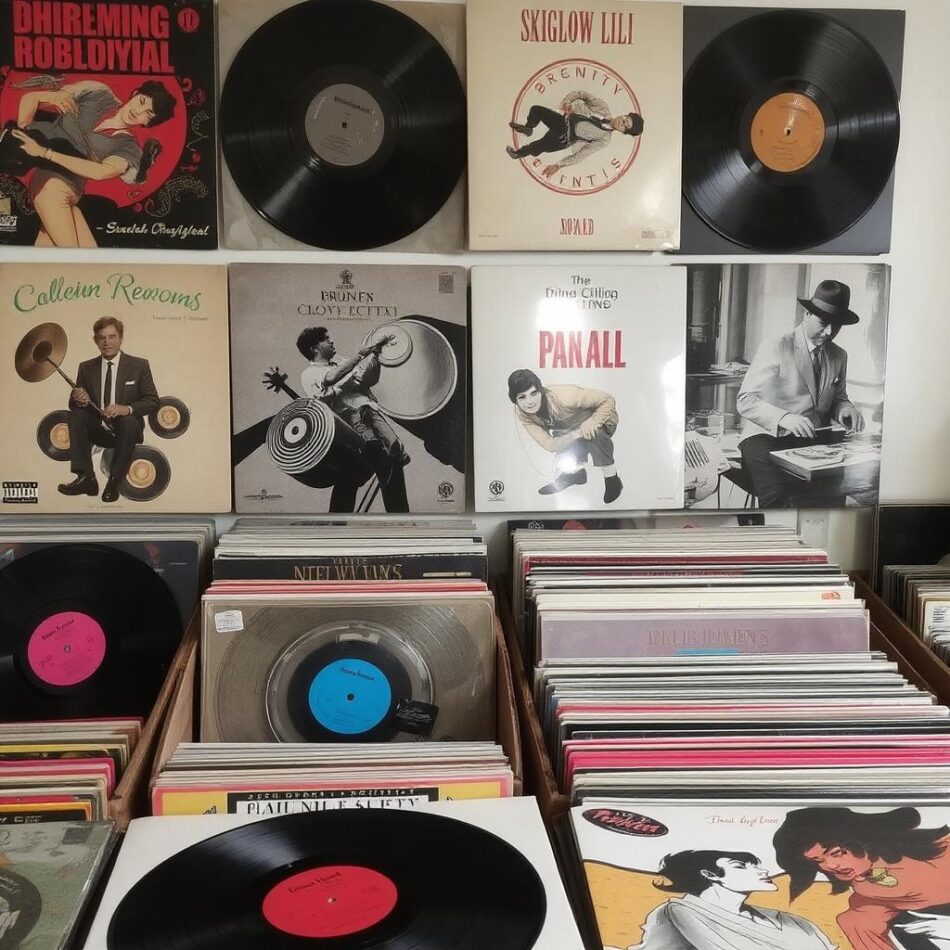these vinyls are invaluable because they preserve local artistic traditions that might otherwise be forgotten.
The legacy of Indian cinema is inseparable from its music. Songs often outlived the films themselves, carrying stories, emotions, and cultural nuances across generations. Yet, in the world of preservation, a peculiar phenomenon exists: many films that have faded from collective memory survive today only through their vinyl soundtracks. While prints of the films may have been lost, damaged, or neglected, the vinyl records remain as the last surviving evidence of their musical existence. For collectors and historians, these LPs and EPs are not just musical artifacts but vital pieces of cinematic history.
During the golden age of Bollywood, music labels like HMV, Odeon, and Polydor were quick to press vinyl records for nearly every film, regardless of its box office performance. This meant that even small-budget productions or experimental films received soundtrack releases. While the films themselves often disappeared due to poor archiving practices and the fragile nature of celluloid, their songs lived on in the form of LPs and 45 RPM singles. For this reason, many titles that would otherwise be entirely forgotten are remembered only because of their surviving vinyl records.
One of the most striking examples is found in films from the 1950s and 1960s. A number of productions with celebrated composers and lyricists have no surviving film prints today, but the records ensure that the music is not lost. Collectors often note that many films starring lesser-known actors, or those released by smaller studios, failed to make it into the preservation archives. Yet, their vinyl releases captured the songs in full fidelity, turning these discs into rare time capsules of vanished cinema.
In many cases, these surviving vinyl soundtracks represent the only link to legendary composers’ forgotten works. For instance, lesser-heard creations of maestros like Madan Mohan, C Ramchandra, or Jaidev exist exclusively on vinyl because the films themselves are lost. Songs that once played in theaters and on the radio can no longer be matched with visual imagery, but their audio remains intact thanks to these records. A collector holding such an LP is not merely enjoying music but safeguarding the remnants of a film erased from the visual archive.
The situation is not unique to Bollywood vinyl records alone. Regional Indian cinema also offers numerous instances where films have disappeared, but the records live on. In Punjabi, Bengali, and Marathi cinema, small studios often failed to maintain prints, while music companies kept their records circulating. Collectors digging into regional vinyl markets often uncover treasures that represent the last surviving memory of a vanished film. For cultural historians, these vinyls are invaluable because they preserve local artistic traditions that might otherwise be forgotten.
The rarity of these albums is heightened by the fact that many were produced in limited quantities. If the film flopped or failed to generate interest, the soundtrack pressings were few, and unsold stock was sometimes melted down and recycled by record companies. Thus, every copy that survives today becomes all the more precious. Collectors often trade stories of tracking down a surviving vinyl in a small-town market or an old family collection, rescuing it from being lost forever.
Another fascinating dimension is that of films with withdrawn soundtracks. Sometimes, legal disputes, censorship issues, or political controversies led to films being shelved or their soundtracks being suppressed. In these cases, vinyl pressings that had already entered circulation became the only surviving evidence of both the film and its music. These records are extremely rare and command high value in collector circles because they embody lost works that can never be reissued officially.
The cultural importance of these vinyls cannot be overstated. They not only preserve music but also give researchers clues about the narrative style of the films, the themes they explored, and the artistic collaborations of the era. Liner notes, cover designs, and even the order of tracks provide insights into how the film was presented to audiences. In some cases, photographs on vinyl sleeves remain the only surviving images of certain films, adding an extra layer of archival significance.
For collectors, acquiring such albums is both a challenge and a responsibility. These records are not just about sound quality or rarity value; they are fragments of cultural memory. Many collectors digitize their finds to make the music accessible to wider audiences, thus ensuring that songs from lost films do not vanish completely. Online communities have also played a role in rediscovering forgotten tracks, sharing stories of films that no longer exist except through their vinyl legacy.
As Bollywood and Indian cinema continue to evolve in the digital age, these vinyl soundtracks stand as reminders of how fragile cultural heritage can be. Films that once filled theaters may be gone, but their music survives, pressed into grooves of vinyl that resist time better than fragile reels of celluloid. For historians, archivists, and collectors, they represent an opportunity to piece together fragments of the past, preserving a heritage that would otherwise remain silent.
In conclusion, the phenomenon of films whose only surviving soundtrack is on vinyl highlights the unique role records play in cultural preservation. They are not just nostalgic artifacts but essential archives of cinema’s lost chapters. Each vinyl carries within it the echoes of a vanished film, proving that while visuals may fade, melodies often endure.
 WhatsApp Us Now
WhatsApp Us Now









